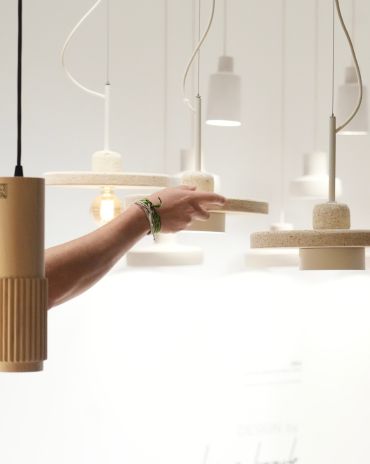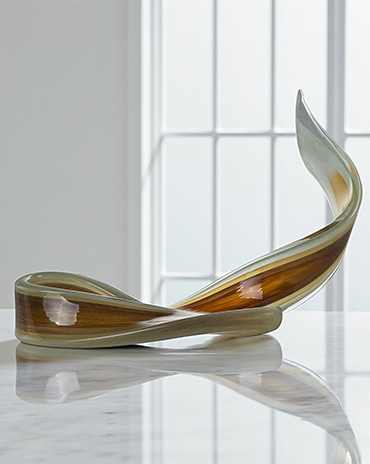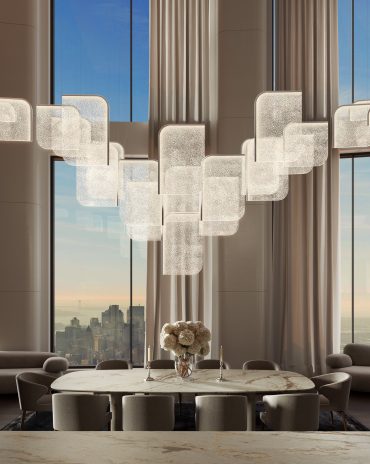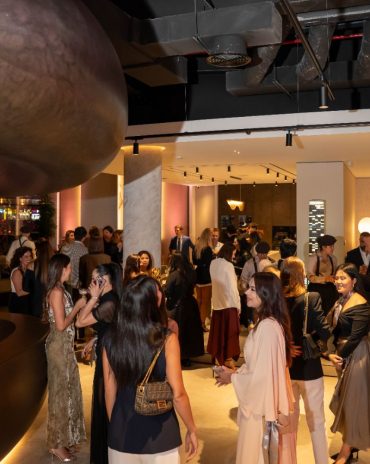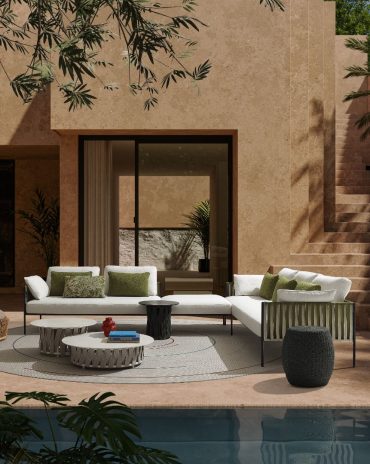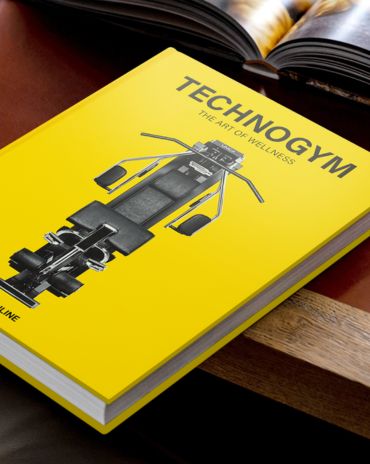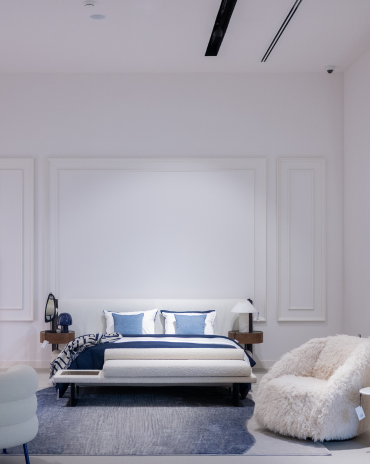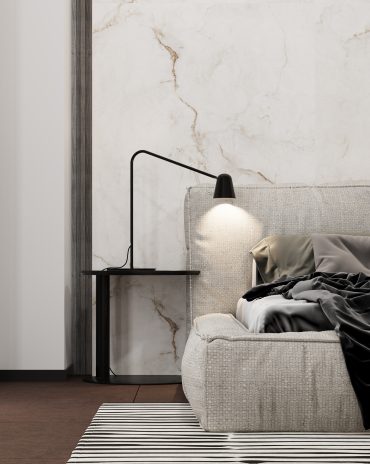Copyright © 2025 Motivate Media Group. All rights reserved.
Here are the MENA artists advancing change
We shine a spotlight on four individuals from the MENA region who are reshaping their respective fields in unconventional ways

Embracing the transformative potential of art, we shine a spotlight on four individuals from the MENA region who are reshaping their respective fields in unconventional ways. Whether pushing back against social taboos or advocating for human rights, these creatives are harnessing the power of art to effect radical change.
Painting through stigma: Nasser Almulhim
In the MENA region, discussions surrounding mental health have historically been confined to the private sphere as a result of prevailing social stigmas. Saudi painter Nasser Almulhim challenges this narrative, bringing difficult conversations to the fore through his evocative works on canvas. Drawing inspiration from Western psychology, particularly the Jungian model, Nasser merges such concepts with his personal investigations into spirituality through his artwork. For him, painting serves as a therapeutic journey – an avenue for releasing himself from past traumas and cyclical thought patterns.
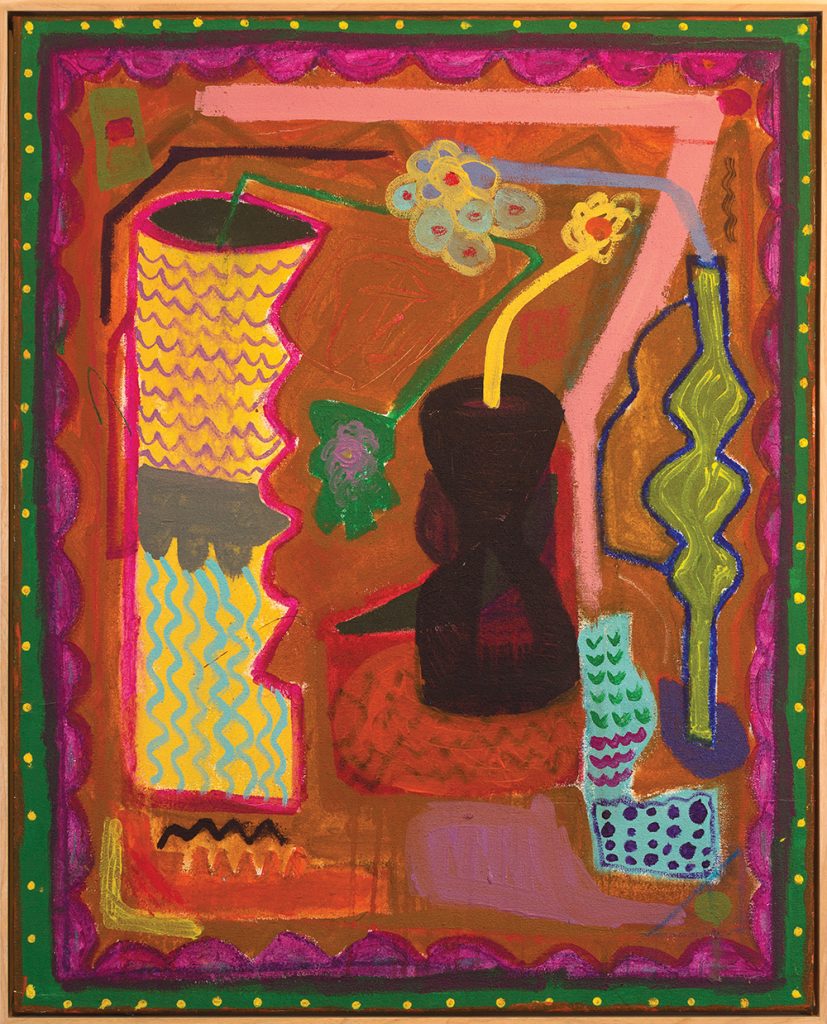
Nasser Almulhim, King of cups flirting with pink full moon (2021) oil, acrylic and oil pastels on canvas
The artist’s seductive use of colour ushers his audience into a world of uplifting imagery where he can raise sensitive subjects surrounding concepts like Jung’s shadow work. In The Philosophical Tree (1945), Jung asserts that: “One does not become enlightened by imagining figures of light, but by making the darkness conscious.” Nasser understands the shadow as a subliminal self, hidden within. The shadow is that which is deemed profane by society, but by integrating the shadow into the self, one can transcend into a state of wholeness. By normalising discussions around mental health and creating a safe space for dialogue, this artist breaks down barriers and destigmatises the topic within his community and beyond.
Championing conscientiousness: Shaqayeq Arabi
Through her conscious approach to sculpture, Iranian visual artist Shaqayeq Arabi brings attention to pressing environmental issues, raising public awareness in the process. Her delicate works, often suspended in the air as mobiles, comprise found and upcycled objects sourced from the communities she inhabits, breathing new life into discarded materials that would otherwise be destined for oblivion.
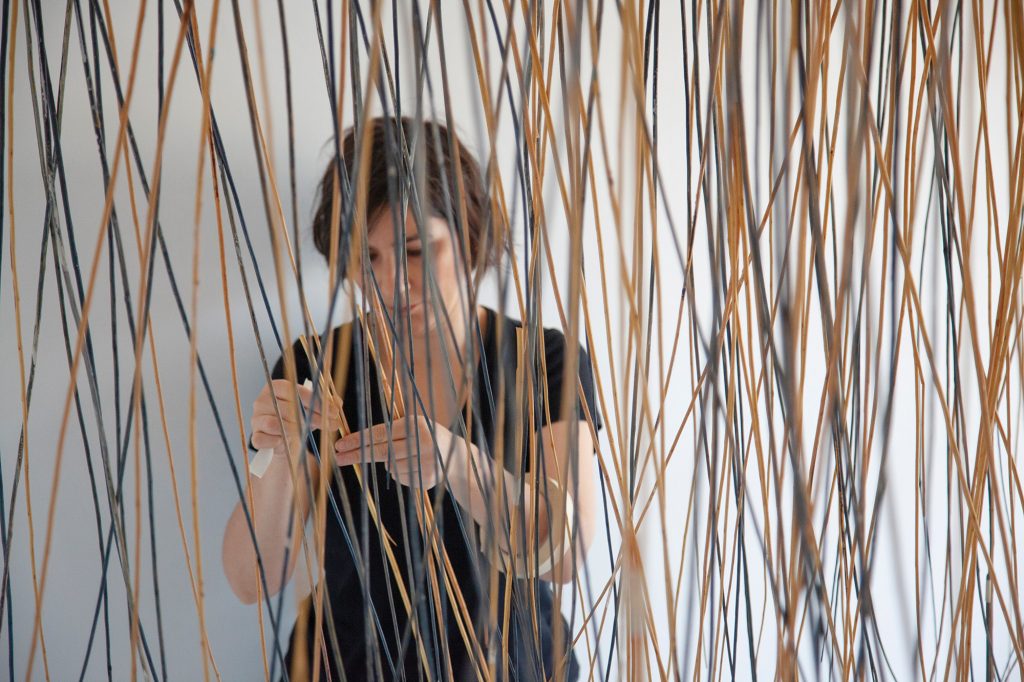
Shaqayeq Arabi
By incorporating objects such as fishing nets and plastic bags used to collect fallen dates from neighbourhood trees, Shaqayeq infuses her creations with the narratives and histories of the local area. These industrial remnants are delicately intertwined with natural elements like twigs and plant life, each with its own lifespan, symbolising the delicate balance between human existence and constructed and natural environments. Viewers engaging with these works are reminded of familiar spaces they have encountered, prompting empathy for the environment. In this sense, Shaqayeq’s work takes on a sociological dimension, encouraging reflection on the preservation and repurposing of objects that are often overlooked or discarded. Through her art, she urges us to reconsider our relationship with the world around us and to recognise the value in the seemingly mundane.
Art as advocacy: Lawrence Abu Hamdan
Self-proclaimed ‘Private Ear’ Lawrence Abu Hamdan uses audio art as his platform to confront and expose unequal sociopolitical conditions and the structures perpetuating them. Operating as an independent investigator, the Lebanese-British artist channels his pursuit of truth through a rigorous and radical exploration of sound. He unearths the political implications of listening, employing sound in various formats – lecture-performances, audiovisual installations, photography, graphic works and text – to scrutinise its impact on human rights and legal frameworks. His installation ‘Saydnaya (the missing 19db)’, for example, emerges as a series of hushed whispers yet the work plunges the audience into the soundscape of a Syrian prison where speaking aloud was punishable by death. Lawrence’s investigations have served as vital evidence in legal proceedings, notably in the UK Asylum and Immigration Tribunal. His advocacy extends to collaborations with organisations such as Amnesty International where he partners with fellow researchers from Forensic Architecture to amplify voices and challenge injustices through sound-based narratives.
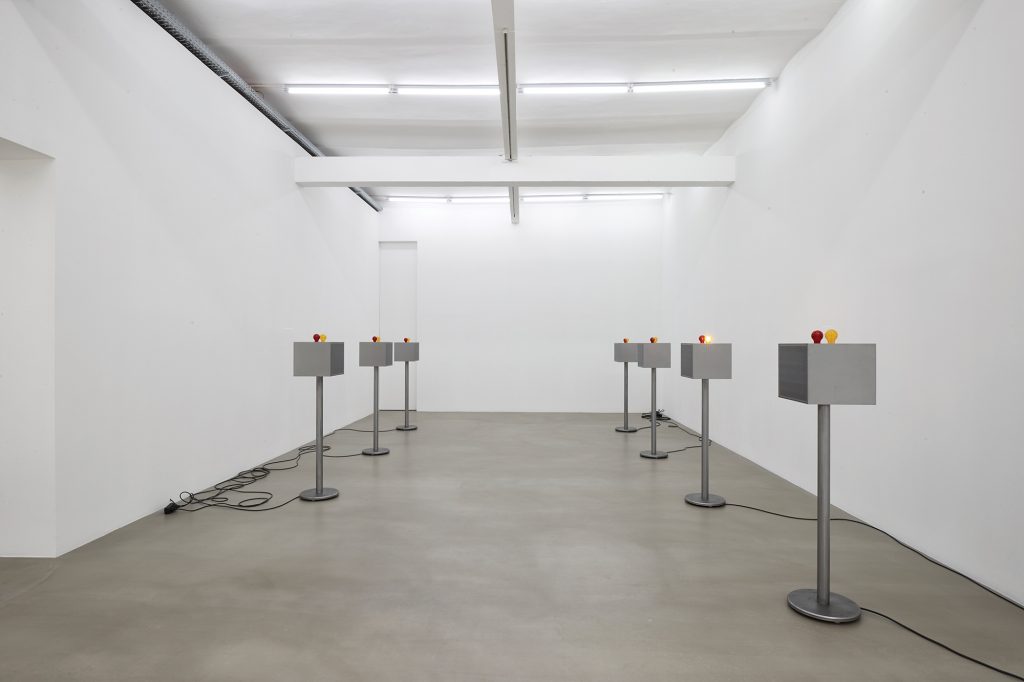
Lawrence Abu
Hamdan, The Witness-Machine Complex (2021). Installation view, Sfeir-Semler Gallery Hamburg. Courtesy the artist and Sfeir-Semler Gallery Beirut/Hamburg
Coining the term: Sophia Al-Maria
Artist, writer and filmmaker Sophia Al-Maria, has left an imprint on a generation and sparked a movement through her conceptual framework known as Gulf Futurism, co-developed with Kuwaiti musician Fatima Al Qadiri.
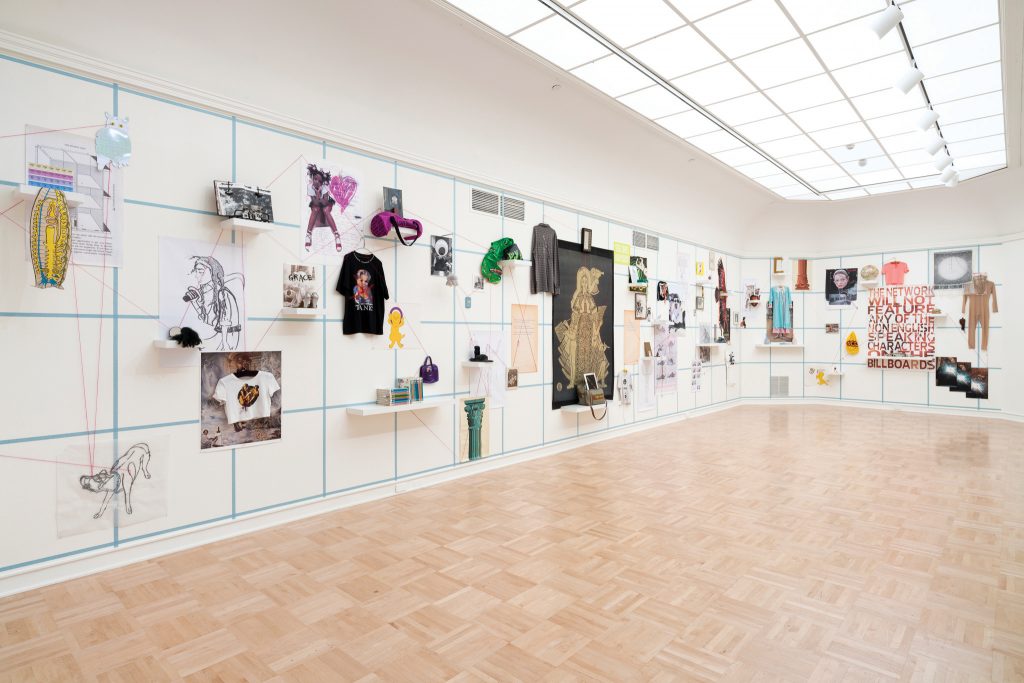
Sophia Al-Maria, Not My Bag (2023), Henry Art Gallery, University of Washington, Seattle. Photography by Jueqian Fang
For Sophia, the Gulf’s rapid urban transformation, driven by its petro-capitalist economy and characterised by dazzling skylines, echoes the futuristic landscapes portrayed in 1980s cyberpunk literature – such as William Gibson’s Neuromancer. Drawing inspiration from Gibson’s famous quote that “The future is already here, it just isn’t evenly distributed yet,” Sophia emerged as a trailblazer, advancing the term Gulf Futurism more than a decade ago. Since then, other artists and scholars have embraced it, infusing their explorations of the region with elements absorbed from sci-fi. This engagement seeks to reimagine representations of the Gulf through the prisms of anticipation, speculation and futuristic iconography, reflecting its dynamic socio-cultural landscape.
Words by Laura Cherrie Beaney
The Latest
Highlights from Feria Hábitat València
The fair received over 40,000 visitors this year, even after being shortened to a three-day event
Things to Covet – October 2025
Here are some unique pieces and home accessories that can add a refined touch to your home
Dubai Design Week 2025 Unfolds: A Living Celebration of Design, Culture, and Collaboration
The 11th edition of the region’s leading design festival unfolds at Dubai Design District (d3)
Preciosa Lighting Unveils ‘Drifting Lights’ at Downtown Design 2025
The brand debuts its newest 'Signature Design' that explores light suspended in motion
IF Hub Opens in Umm Suqeim
A New Destination for Design and Collaboration in Dubai
The Language of Weave
Nodo Italia at Casamia brings poetry to life
The Art of the Outdoors
The Edra Standard Outdoor sofa redefines outdoor living through design that feels, connects and endures
The Art of Wellness
Technogym collaborates with Assouline to release a book that celebrates the brand’s 30-year contribution to the fitness industry
The Destination for Inspired Living – Modora Home
Five reasons why you need to visit the latest homegrown addition to the UAE’s interiors landscape
Elemental Balance — A Story Told Through Surfaces
This year at Downtown Design 2025, ClayArk invites visitors to step into a world where design finds its rhythm in nature’s quiet harmony.
The identity Insider’s Guide to Downtown Design 2025
With the fair around the corner, here’s an exciting guide for the debuts and exhibits that you shouldn’t miss
A Striking Entrance
The Oikos Synua door with its backlit onyx finish makes a great impression at this home in Kuwait.





